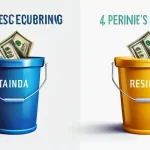As a seasoned blog influencer, let me tell you, tax season can feel like navigating a maze blindfolded, right? Especially with all the talks about potential tax law changes, inflation adjustments, and new credit opportunities for 2025.
I’ve personally been there, feeling that pre-tax consultation dread, wondering if I’ve got all my ducks in a row. But honestly, a little preparation goes a long way – it’s like having a secret weapon that not only saves you stress but can also unlock significant savings and a smoother experience with your tax professional.
From my experience, being organized and knowing what to expect can turn that anxious feeling into a confident stride, ensuring you don’t miss out on valuable deductions or run into any last-minute hiccups.
Let’s dive in and find out more below, so you can ace your next tax consultation!
Getting Your Personal Ducks in a Row

Okay, let’s be real – the thought of digging up all your personal info for tax season can feel like a scavenger hunt you never signed up for. But trust me, from my own experience, having these details perfectly organized is the first, most crucial step to a stress-free consultation. It’s like laying out all your ingredients before you start cooking; everything just flows better. This isn’t just about avoiding a last-minute panic; it’s about giving your tax pro a clear, complete picture right from the get-go, which ultimately helps them find every possible advantage for you.
Personal Identifiers & Household Details
First things first, gather those critical personal identifiers for everyone on your return: yourself, your spouse, and all dependents. That means Social Security Numbers (SSNs) or Individual Taxpayer Identification Numbers (ITINs) and their birth dates. I can’t tell you how many times I’ve seen folks scramble for these, only to realize a digit was off, leading to unnecessary delays. If the IRS has issued you, your spouse, or a dependent an Identity Protection PIN (IP PIN), make sure that’s also easily accessible; it’s an extra layer of security that you’ll definitely need. And don’t forget your bank account and routing numbers. Whether you’re anticipating a refund or preparing to make a payment, having this information ready for direct deposit or electronic payment simplifies things immensely. It’s truly a game-changer for speed and accuracy.
Last Year’s Numbers: Your Tax Return Blueprint
While not strictly mandatory, I always, *always* recommend bringing a copy of your federal and state tax returns from the previous year. Think of it as your tax preparation roadmap. It serves as a fantastic refresher on what documents you used, what deductions you claimed, and generally provides a baseline for your current financial situation. Many tax software programs and professionals can even upload your prior-year return, saving you a ton of manual data entry time. It also helps your tax advisor quickly spot any significant changes year-over-year that might signal new opportunities or potential red flags to address. I know for me, looking back at what I did last year often sparks a memory of some expense or income source I might otherwise forget, so it’s a habit I’ve certainly come to appreciate.
Decoding Your Income Stream for a Clear Picture
When it comes to taxes, accurately reporting all your income sources is non-negotiable. It’s the foundation upon which your entire return is built. Sometimes, people get so focused on deductions that they overlook pieces of income, and that can lead to some real headaches down the line. I’ve personally made a point of creating a dedicated folder (digital and physical!) where I stash every single income-related document as it arrives throughout the year. This proactive approach saves me from that frantic end-of-year search, and it ensures no income slips through the cracks, giving my tax professional everything they need to ensure compliance and accuracy.
W-2s, 1099s, and Everything In-Between
For most of us, our primary income comes from employment, so your W-2 forms are paramount. Employers are generally required to issue these by January 31st, so keep an eye on your mail and email for them. Beyond that, a whole alphabet soup of 1099 forms covers other common income types: 1099-INT for interest income from banks, 1099-DIV for dividends, and 1099-B for broker-handled investment transactions. If you received payments from a retirement plan, pension, or annuity, you’ll be looking for a 1099-R. Don’t forget any Social Security benefits, which will come on a SSA-1099 form, or unemployment benefits, reported on a 1099-G. Every single one of these tells a part of your financial story, and your tax pro needs the full narrative.
Navigating Gig Economy & Investment Income
The rise of the gig economy means many of us have diverse income streams these days, and it’s easy to overlook some of these smaller payments. If you’re freelancing, contracting, or earning income through platforms like PayPal or Venmo, you’ll likely receive Form 1099-NEC for non-employee compensation or a 1099-K for payment card and third-party network transactions. Now, here’s a crucial update for 2025: the 1099-K reporting threshold is changing. Going forward, those entities are only required to send you a 1099-K if your total payments are over $20,000 *and* you had over 200 transactions on a single platform in a given year. However, remember you’re still required to report all income, even if you don’t receive a specific form. I’ve heard too many stories of people getting caught out by this, so meticulously track every dollar you earn from side hustles, no matter how small. Also, don’t forget to report any rental income, alimony received, or capital gains from cryptocurrency transactions – the IRS is definitely paying attention to digital assets now.
Unlocking Savings: Deductions and Credits You Can’t Miss
This is where the real magic happens, folks – finding those opportunities to lower your taxable income or directly reduce your tax bill. It’s a part of tax preparation that I genuinely enjoy, because it feels like a puzzle where the reward is more money staying in *my* pocket. While the standard deduction is often the easiest route, I always encourage people to explore itemizing, especially with some of the changes we’ve seen. You never know what deductions or credits might apply to your unique situation, and honestly, missing out on them is like leaving cash on the table. It pays to be diligent here, and I’ve seen firsthand how a little bit of research can lead to significant savings.
Homeownership & Education Perks
For homeowners, your mortgage interest, typically reported on Form 1098, can be a substantial deduction if you itemize. And good news for 2025: the State and Local Tax (SALT) deduction cap is temporarily increasing to $40,000, which is a huge relief for many in high-tax areas like where I live, though phase-outs will apply for higher incomes. If you’re juggling education expenses, whether for yourself or a dependent, there are valuable credits like the American Opportunity Tax Credit and the Lifetime Learning Credit. You’ll need Form 1098-T for tuition and fees, and don’t forget interest paid on student loans, typically reported on Form 1098-E, is also deductible up to a certain limit. It’s so easy to overlook these, but they can significantly impact your bottom line.
Charitable Giving & Retirement Savvy
Giving back often comes with a tax perk. If you’re itemizing, your charitable cash contributions can generally be deducted up to 60% of your adjusted gross income (AGI) for public charities. Retirement contributions are another fantastic way to reduce your taxable income. For 2025, the IRA contribution limit remains at $7,000 ($8,000 if you’re 50 or older), and 401(k) limits are increasing to $23,500 ($30,500 if 50 or older). I’m a huge advocate for maximizing these; it’s a win-win for your future and your current tax bill. Health Savings Accounts (HSAs) are also incredibly powerful, allowing tax-deductible contributions (up to $4,300 for self-only and $8,550 for family coverage in 2025) and tax-free withdrawals for qualified medical expenses. On top of all this, the “One Big Beautiful Bill Act” introduces some temporary deductions for 2025-2028, including a deduction for tips up to $25,000 and qualified overtime income up to $12,500 for certain workers, with income phase-outs. The child tax credit is also being enhanced to $2,200 per qualifying child for 2025, and there’s even a new bonus deduction for older adults!
Special Situations: Don’t Leave Money on the Table!
Life is rarely a straight line, and our finances often reflect that beautiful messiness. What I’ve learned over the years is that some of the biggest tax savings come from understanding and documenting those “special situations” that fall outside the typical W-2 employee scenario. These are the areas where many people, in their rush, tend to overlook deductions or credits that could really make a difference. It might feel like extra effort to track these details, but I promise you, that effort is worth its weight in gold when your tax return comes back looking much more favorable. It’s about recognizing your unique financial landscape and ensuring every qualifying activity is accounted for.
Self-Employment & Business Deep Dive
For my fellow entrepreneurs, freelancers, and gig workers, this section is particularly vital. Your 1099-NEC and 1099-K forms are just the beginning. The real magic for self-employed individuals lies in meticulously tracking and documenting every business expense. We’re talking about receipts for supplies, software subscriptions, professional development, and even those networking lunches (within IRS guidelines, of course!). Don’t forget your mileage logs for business-related travel or a detailed record of home office expenses if you work from home. I keep a dedicated spreadsheet and use an expense tracking app throughout the year; it’s a small habit that saves enormous headaches come tax time. Plus, if you’re running your business through an LLC electing S-corp status, you can strategically manage self-employment taxes. These aren’t just deductions; they’re reflections of your hard work and the costs of doing business, and you deserve to claim every single one you’re entitled to.
Health Expenses & Other Unique Opportunities
Medical and dental expenses can be a significant deduction, but they often come with a high bar: you can generally only deduct the amount that exceeds 7.5% of your adjusted gross income, and only if you itemize. So, while it takes a lot to qualify, if you’ve had a year with substantial medical bills, keep all those records. As I mentioned earlier, contributing to a Health Savings Account (HSA) is a fantastic way to handle these expenses tax-efficiently. Beyond that, think about other unique life events or contributions. Did you contribute to a 529 plan for education savings? While not a federal deduction, many states offer tax benefits for these contributions. And if you’ve made energy-efficient home improvements, there are often federal tax credits that can directly reduce your tax liability, like the credit for renewable-energy systems. It’s truly amazing how many ways the tax code tries to incentivize positive actions, but it’s up to us to know about them and claim them!
Steering Clear of Common Tax Season Pitfalls
Alright, let’s talk about some of the blunders I’ve seen people make – and sometimes, if I’m being honest, almost made myself! It’s super easy to get caught up in the stress of tax season, which can lead to silly mistakes. But these aren’t just minor oversights; they can lead to delayed refunds, penalties, or even an audit. Believe me, an audit is not a fun experience, and avoiding one is always my top priority. My golden rule here is vigilance: double-check everything, and if something feels off, investigate it. It’s better to be overly cautious than to face a bill from the IRS down the road.
Avoiding Filing Status Blunders
Choosing the correct filing status might sound basic, but it’s a surprisingly common area for mistakes, and it can dramatically impact your tax liability or refund. Your marital status, whether you have dependents, and who lived with you for most of the year all play a role. Are you Single, Married Filing Jointly, Married Filing Separately, Head of Household, or a Qualifying Widow(er)? Each status has different standard deductions, tax brackets, and credit eligibility. Forgetting to update your status after a divorce, marriage, or the birth of a child is a huge no-no. I once advised a friend who was still filing as Single several years after her divorce because she just hadn’t thought to change it; correcting that made a substantial difference to her refund! Always review your current life situation and ensure it aligns with the filing status you choose. The IRS website offers an Interactive Tax Assistant that can help you determine the right status, which I highly recommend if you’re unsure.
The Perils of Incomplete Reporting
Underreporting income, even accidentally, is one of the biggest red flags for the IRS. Whether it’s gig work, a side hustle, gambling winnings, or investment gains, every dollar needs to be accounted for. The IRS receives information from employers, banks, brokerage firms, and payment processors, so they often know about your income even if you forget to report it. Similarly, claiming deductions or credits you’re not eligible for, or doing so without proper documentation, can also lead to trouble. I know the temptation to push the limits, but proper documentation is your best friend here. Always remember, even if you use tax software or a tax professional, *you* are ultimately responsible for the accuracy of your return. So, take the time to review everything before signing on the dotted line, and ask questions if anything looks unclear or incorrect. That careful review can save you a lot of stress and potential financial setbacks.
Finding Your Perfect Tax Navigator
Okay, so you’ve gathered all your documents and you’re feeling good about your records. Now, for many of us, the next step is finding a fantastic tax professional to help make sense of it all. This isn’t just about handing off a pile of papers; it’s about finding a trusted advisor who understands your unique financial journey and can guide you through the complexities of the tax code. I’ve learned that the right person can not only save you money but also provide immense peace of mind. It’s a relationship, not just a transaction, and like any good relationship, it takes a bit of thoughtful searching to find “the one.”
Credentials and What They Really Mean
When you’re looking for a tax preparer, you’ll come across different titles, and it’s important to know what they signify. A Certified Public Accountant (CPA) is state-licensed, has extensive training in accounting and tax law, and can represent you before the IRS. An Enrolled Agent (EA) is federally licensed by the IRS, specializes in taxation, and also has unlimited rights to represent taxpayers. Then there are tax attorneys, who are lawyers specializing in tax law. For most individuals and small businesses, a CPA or EA offers the expertise needed. Always verify their credentials with your state’s Board of Accountancy for CPAs, the state bar for attorneys, or by emailing the IRS for EAs. Plus, by law, anyone who prepares federal tax returns for compensation must have a valid Preparer Tax Identification Number (PTIN). This is a basic requirement, so always ensure your preparer has one and includes it on your return. Never, ever sign a blank return.
Beyond the Basics: What to Ask Your Pro
Choosing a tax professional goes beyond just checking their credentials. I always tell people to look for a preparer who is available year-round, not just during tax season. You never know when questions or unexpected tax situations might pop up. Ask about their fee structure – reputable professionals will be transparent about whether they charge flat fees, hourly rates, or monthly retainers, and they will *never* base their fee on a percentage of your refund, which is a major red flag. In my experience, a good tax professional will ask you lots of questions, show genuine interest in your financial situation, and insist on seeing all your documentation, not just taking your word for it. They should also offer e-file services, as the IRS processes most refunds faster for electronically filed returns with direct deposit. Ultimately, you want someone who feels like a partner, someone who’s not just filling out forms but actively helping you plan and strategize for your financial future.
| Category of Document | Key Documents/Information to Gather | Why It’s Important |
|---|---|---|
| Personal Information |
|
Ensures accurate identification, facilitates direct deposit/payment, and provides historical context for your tax pro. |
| Income Statements |
|
All sources of income must be reported to avoid penalties and ensure correct tax calculation. |
| Deductions & Credits |
|
Maximizes your refund or reduces tax liability by claiming eligible expenses and applying available credits. |
| Self-Employment/Business |
|
Essential for accurately reporting business income and claiming all allowable business deductions to lower taxable income. |
Wrapping Things Up
Whew! We’ve covered a lot of ground today, haven’t we? It might seem like a mountain of information, but taking the time to truly understand these moving parts of your financial life is an investment in your peace of mind and, let’s be honest, your wallet. From my own journey, I’ve learned that the secret sauce isn’t just knowing the rules, but actively engaging with them throughout the year. It’s about building habits that make tax season a smooth, rather than stressful, experience. Here’s to feeling empowered and ready!
Handy Information You’ll Want to Keep
Here are a few quick tips and insights that I’ve personally found invaluable for staying on top of my tax game, and I truly believe they can make a difference for you too:
1. Embrace Digital Record-Keeping Early: Don’t wait until January! I’ve found that setting up a cloud-based folder (like Google Drive or Dropbox) where I upload receipts, statements, and important documents as they come in saves me countless hours of frantic searching later. It’s a game-changer for organization. You can even snap photos of receipts with your phone right when you get them.
2. Understand Estimated Taxes for Gig Work: If you’re part of the booming gig economy or self-employed, remember that the IRS expects you to pay taxes throughout the year, not just once. Neglecting estimated tax payments can lead to penalties, so track your income and expenses meticulously and make those quarterly payments to avoid a nasty surprise.
3. Regularly Review Your Withholding: Life changes – marriages, new babies, side hustles – and your W-4 should too! Take a moment annually, or after any significant life event, to use the IRS Tax Withholding Estimator tool. It’s an easy way to ensure you’re not overpaying or underpaying throughout the year, preventing a huge tax bill or a surprisingly small refund.
4. Stay Updated on Tax Law Changes: Tax laws aren’t static; they evolve. A quick annual check on major updates, especially concerning deductions or credits that might apply to you, can yield unexpected savings. Subscribing to reputable financial newsletters or blogs (like this one!) can keep you in the loop without feeling overwhelmed.
5. Don’t Be Afraid to Consult a Professional: While DIY tax software is great for many, there’s no substitute for a qualified tax professional when your financial situation gets complex. They can spot deductions you’ve missed, offer strategic advice for future planning, and truly optimize your return. Think of it as investing in expert guidance for your financial well-being.
Key Takeaways to Remember
To truly master your tax season, remember these core principles: First, organization is your superpower. Keep all personal and financial documents meticulously stored, preferably digitally, throughout the year. Second, accurate income reporting is non-negotiable, even for small gig economy earnings, as the IRS receives data from various sources. Third, proactively explore deductions and credits – new legislation like the “One Big Beautiful Bill Act” and consistent inflation adjustments mean there are often new opportunities for savings through homeownership, education, retirement contributions, and even specific deductions for tips and overtime for tax year 2025. Finally, don’t hesitate to leverage the expertise of a qualified tax professional; their knowledge can lead to significant savings and invaluable peace of mind, helping you navigate the complexities and avoid common pitfalls. Staying informed and organized empowers you to take control of your financial future.
Frequently Asked Questions (FAQ) 📖
As a seasoned blog influencer, let me tell you, tax season can feel like navigating a maze blindfolded, right? Especially with all the talks about potential tax law changes, inflation adjustments, and new credit opportunities for 2025.
I’ve personally been there, feeling that pre-tax consultation dread, wondering if I’ve got all my ducks in a row. But honestly, a little preparation goes a long way – it’s like having a secret weapon that not only saves you stress but can also unlock significant savings and a smoother experience with your tax professional.
From my experience, being organized and knowing what to expect can turn that anxious feeling into a confident stride, ensuring you don’t miss out on valuable deductions or run into any last-minute hiccups.
Let’s dive in and find out more below, so you can ace your next tax consultation! First off, many provisions from the 2017 Tax Cuts and Jobs Act (TCJA) have been made permanent, which is a relief for those of us who appreciate some stability!
This includes the higher standard deduction amounts and the current federal income tax rates, which remain at 10%, 12%, 22%, 24%, 32%, 35%, and 37%. The IRS also makes annual inflation adjustments, and for 2025, these adjustments generally mean higher income thresholds for tax brackets, standard deductions, and various credits.
For example, the standard deduction for single filers is set to rise to $15,000 (up from $14,600 in 2024), and for married couples filing jointly, it’s increasing to $30,000 (up from $29,200).
Heads of household will see their standard deduction go up to $22,500. Now, for some really exciting news: new temporary deductions are available from 2025 through 2028.
If you’re 65 or older, you could claim an additional deduction of $6,000 – and for married couples where both qualify, that’s $12,000! This is fantastic for our seniors looking to retain more of their hard-earned money.
For those in service industries, there’s a new “no tax on tips” deduction, allowing you to deduct up to $25,000 in qualified tips. And if you’re pulling in extra hours, the “no tax on overtime” provision lets you deduct up to $12,500 of qualified overtime pay.
These are incredible opportunities to reduce your taxable income, but keep in mind there are income-based phase-outs, so check the specifics. Parents, listen up!
The Child Tax Credit is seeing a boost, permanently increasing to $2,200 per qualifying child for 2025, with up to $1,700 being refundable. This is a huge help for families, and it will be adjusted for inflation annually.
Also, the State and Local Tax (SALT) deduction cap, which has been a hot topic for a while, is temporarily rising from $10,000 to $40,000 for tax years 2025-2029, with income phase-outs starting at $500,000.
This is great news for those living in high-tax states. On the flip side, some energy-efficient credits, like those for new EVs and certain home improvements, might be phased out or eliminated after late 2025 or 2026, so if you’re considering those, act fast!
From my own experience, these changes mean it’s more important than ever to review your financial situation mid-year. I usually sit down with my spreadsheets and notes around June or July to see if I need to adjust my withholding or make any strategic moves.
It really helps me feel more in control when it’s time to gather everything for my tax pro. First, let’s talk about the absolute basics. You’ll need personal identification, like a photo ID, and your Social Security card (or ITIN) for yourself, your spouse, and any dependents.
Also, have your bank account and routing numbers ready if you’re looking for that sweet direct deposit refund. If you’ve received an Identity Protection PIN from the IRS, bring that along too.
I always keep a copy of my previous year’s tax return handy; it’s a fantastic reference for recurring deductions, credits, or income sources. Next up is income documentation.
This is usually pretty straightforward: your W-2 forms from each employer are a must, detailing your wages and taxes withheld. If you have other income sources, you’ll need those too.
Think 1099 forms for freelance or contract work (1099-NEC), interest income (1099-INT), dividends (1099-DIV), retirement distributions (1099-R), or even unemployment compensation (1099-G).
If you’re self-employed, like me, you’ll want meticulous records of all your income, including anything not reported on a 1099, plus all your business expenses – keep those receipts organized!
Don’t forget about deductions and credits! This is where you can really save money. Gather documentation for mortgage interest (Form 1098), student loan interest (Form 1098-E), and tuition expenses (Form 1098-T).
If you made charitable donations, ensure you have receipts or acknowledgment letters. Medical and dental bills, especially if they exceed a certain percentage of your Adjusted Gross Income, can also be deductible.
For those with an HSA, bring records of contributions and distributions. Remember those new deductions for seniors, tips, and overtime? Keep clear records of those amounts if they apply to you!
What I personally do is create a dedicated digital folder (or a physical one, if that’s your jam!) for all my tax documents throughout the year. As soon as a W-2 or 1099 comes in, it goes straight into that folder.
This way, when it’s time for my consultation, it’s less of a scramble and more of a quick review. It truly makes the entire process so much less daunting.
First, let’s revisit some of those exciting new deductions. If you’re 65 or older, that new $6,000 additional deduction ($12,000 for qualifying married couples) is a game-changer.
Make sure you and your tax professional are aware of this, as it can significantly reduce your taxable income, regardless of whether you itemize or take the standard deduction.
Similarly, if you’re in a tipped occupation or earn overtime, diligently tracking those qualified amounts for the new tip and overtime deductions (up to $25,000 and $12,500 respectively) can put more money back in your pocket.
For families, the increased Child Tax Credit to $2,200 per child is a major win. Ensure all your qualifying children are correctly listed and that you meet the eligibility criteria and income thresholds.
If you live in a state with high property or income taxes, the temporary increase in the SALT deduction cap to $40,000 is fantastic news. This means you can deduct more of those expenses, which could lead to substantial savings.
Beyond the new provisions, don’t forget the evergreen strategies. Maxing out contributions to tax-advantaged retirement accounts like a 401(k) or IRA is always a smart move.
For 2025, the 401(k) contribution limit is $23,500, with an additional $7,500 catch-up contribution for those 50 and over (and even higher limits for those 60-63 due to Secure 2.0).
Traditional IRA contributions, up to $7,500, can also be tax-deductible. These contributions reduce your taxable income directly, which can put you in a lower tax bracket.
If you have a high-deductible health plan, contribute the maximum to your Health Savings Account (HSA). It’s a triple tax advantage: contributions are tax-deductible, it grows tax-free, and withdrawals for qualified medical expenses are tax-free.
For 2025, you can contribute up to $4,150 for self-only coverage and $8,300 for families. I’ve personally found that the key to maximizing benefits is year-round planning.
Don’t wait until April 14th! I track all my potential deductions and credits as they occur. For example, if I’m making a significant charitable donation, I log it immediately.
If I have a big medical expense, I make sure the receipts are filed. And honestly, a quick chat with your tax professional even before year-end can yield incredible insights into personalized strategies.
They often know about lesser-known credits or deductions specific to your situation that you might otherwise overlook. It’s truly about staying engaged with your finances and seeing your tax return as an opportunity, not just an obligation.
📚 References
Wikipedia Encyclopedia
구글 검색 결과
구글 검색 결과
구글 검색 결과
구글 검색 결과
구글 검색 결과






